Shenzhen’s history didn’t start in 1979 – it goes back hundreds of years, to another golden age
- The dynamic city, as well as what’s now being called the Greater Bay Area, has a far richer past than four decades of development suggest
- Evidence of antiquity, long ignored in the region’s rush towards modernity, can still be found
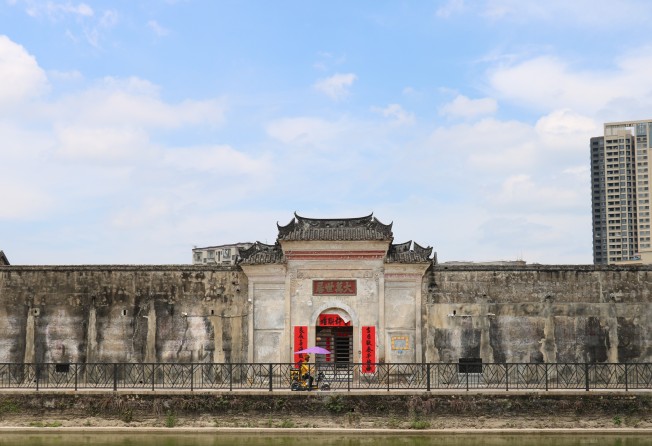
The fishing-village-turned-metropolis hook thrown out by countless journalists when writing about Shenzhen neatly encapsulates the fact that a relative nowhere became a serious somewhere after Deng Xiaoping earmarked it as ground zero in the spearheading of reforms, in 1978. To this day, 40 years after the Chinese leader unleashed its long-dormant entrepreneurial zeal, there is no better (or more readily applied) metaphor for the transformation of China than the skyscraper-studded cityscape north of the Sham Chun River.
Even in the decade since the 2008 Beijing Olympic Games, during which the shutters have begun to close on Deng’s grand liberal experiment, Shenzhen has developed with abandon, transforming itself from a seedy-border-town-cum-manufacturing-hub into the engine room of China’s hi-tech and green innovation industries. Among the corporate heavy-hitters calling “China’s Silicon Valley” home are BYD, the world’s largest producer of electric vehicles, and Tencent, the world’s largest gaming and social media company.
Like generations of aspirational migrants from the Chinese interior, the tech savvy are tempted south by comparatively low rent, an unparalleled supply chain and vibrant nightlife, which is perhaps why Lonely Planet put Shenzhen second on its top cities list for 2019.
“Shenzhen lets people like me do what we want to do,” explains festival organiser, radio DJ and bookstore owner Tu Fei, who hails from landlocked Hunan province and complains of the localism prevalent in cities such as Beijing, Shanghai and Guangzhou. If Shenzhen is accused of lacking anything, it is wenhua, which translates as “culture” but which can equally imply “roots”, “heritage” or a “strong sense of identity”.
Shenzhen was officially made a city in March 1979. The 40th birthday celebrations, however, began in earnest last year, with the anniversary of “reform and opening-up” marked by a neon-lit show illuminating the Futian district nightly from September to December with a spectacle to rival Hong Kong’s Symphony of Lights.
The four-decade, rags-to-riches story is a potent one but the notion that there was nothing but a fishing village in the 2,000 sq km Shenzhen now occupies until Deng waved his economic wand must surely sell the area short.
China is, after all, the most heavily populated country on Earth and one that boasts thousands of years of recorded history. Neighbouring Guangzhou has had a well-documented role in the grand Chinese drama for at least two millennia. Might the story buried beneath Shenzhen’s silicon-paved streets be a significant one?
Shenzhen Museum is hidden inside the east “wing” of the iconic Civic Centre. “Wing” because the building is shaped like a giant rok, or peng, a mythical bird that appears in the opening chapter of the classic Taoist text Zhuangzi, wherein it “journeys to the southern darkness”. It is to this creature that Shenzhen owes its epithet, Pengcheng or “city of the rok”.
Within the museum an epic story is told, even allowing for a few politically inspired falsehoods – such as Taiwan appearing as an indelible part of the Han empire (the island wasn’t completely conquered until the Qing dynasty). Grooved stone tools and clay pots attest to a Neolithic culture that thrived on the coastal plains from about 5000BC, long before the armies of Qin Shihuang set out to conquer the lands south of the Five Ridges.
Qin’s southern expedition brought Shenzhen into the China fold, if at first briefly, when the area was incorporated into Panyu county, Nanhai prefecture in 214BC. But, as historian Jonathan Fenby puts it in The Dragon Throne: China’s Emperors from the Qin to the Manchu (2015), Guangdong was regarded as “disease-ridden barbarian territory” and colonisation was far from absolute.
“Little is known of the Qin presence there, but it is a fair bet that the empire’s control was tenuous and that its settled southern border lay on the edge of the former Chu lands on what are now Hunan, Jiangxi and Zhejiang provinces.”
After the short-lived Qin dynasty collapsed, in 207BC, the breakaway Nanyue Kingdom emerged to rule much of southern China and northern Vietnam for a century (this story is told in the Mausoleum of the Nanyue King, in Guangzhou, a museum located on the site where a farmer unearthed the royal tomb, along with a treasure trove of antiquities, in 1983).
In 111BC, a massive military campaign recaptured Shenzhen and the south for Han China, beginning the process of assimilating the southern “barbarians” through migration, intermarriage and military domination.
By the time of the Jin dynasty (AD265-420), a garrison town had been founded in Nantou, located in present-day Nanshan (one of nine districts that comprise Shenzhen), that was home to 2,000 soldiers tasked with safeguarding trade along the emerging Maritime Silk Road.
“Nantou was chosen because of its location,” says Cai Xiaoming – or, as he prefers to be known, Simon Tsai – a museum employee whose responsibilities include public education.

“For most of history, Shenzhen was known as Bao’an County, which was part of Dongguan prefecture,” Tsai says. “Nantou was the administrative centre because if you trace your finger northwards along a map, you don’t encounter any mountains. There was an ancient road that passed through important places like Humen [at the strategic point where the Pearl River narrows] and then connected to Guangzhou. The route is still used, as part of National Highway 107.”
What’s left of Nantou Ancient City – which governed Shenzhen, Hong Kong and parts of Dongguan for more than 1,600 years, until the Kowloon-Canton Railway opened in 1911 and drew commerce eastward – is tucked away beyond the vast Science Park, where many of Shenzhen’s top technology companies are based. Above the southern gate in city walls that date back to the 13th century, carved into the stone are the characters “Ning Nan”, which imply a “peaceful south”.
The town within the walls is more representative of recent history than of the ancient heart of Bao’an County, or Xin’an, as it was known during the Ming dynasty (1368-1644). There are open-air fruit and vegetable stalls, cheap noodles joints and bathroom-tile tenements built so close to one another they’re known locally as “kissing houses”. Everyone seems to hail from elsewhere in China.
There are signs of gentrification – an art gallery here, a bookshop there – and attempts at conservation, including a wall plaque designating the “Guangzhou government’s Xin’an County ya” (regional mandarin’s office) as a protected building. Stone lions and ornamental pillars flank the wooden door but it’s a relatively humble abode, even though it was from this office that Hong Kong was governed before the first opium war (1839-42).
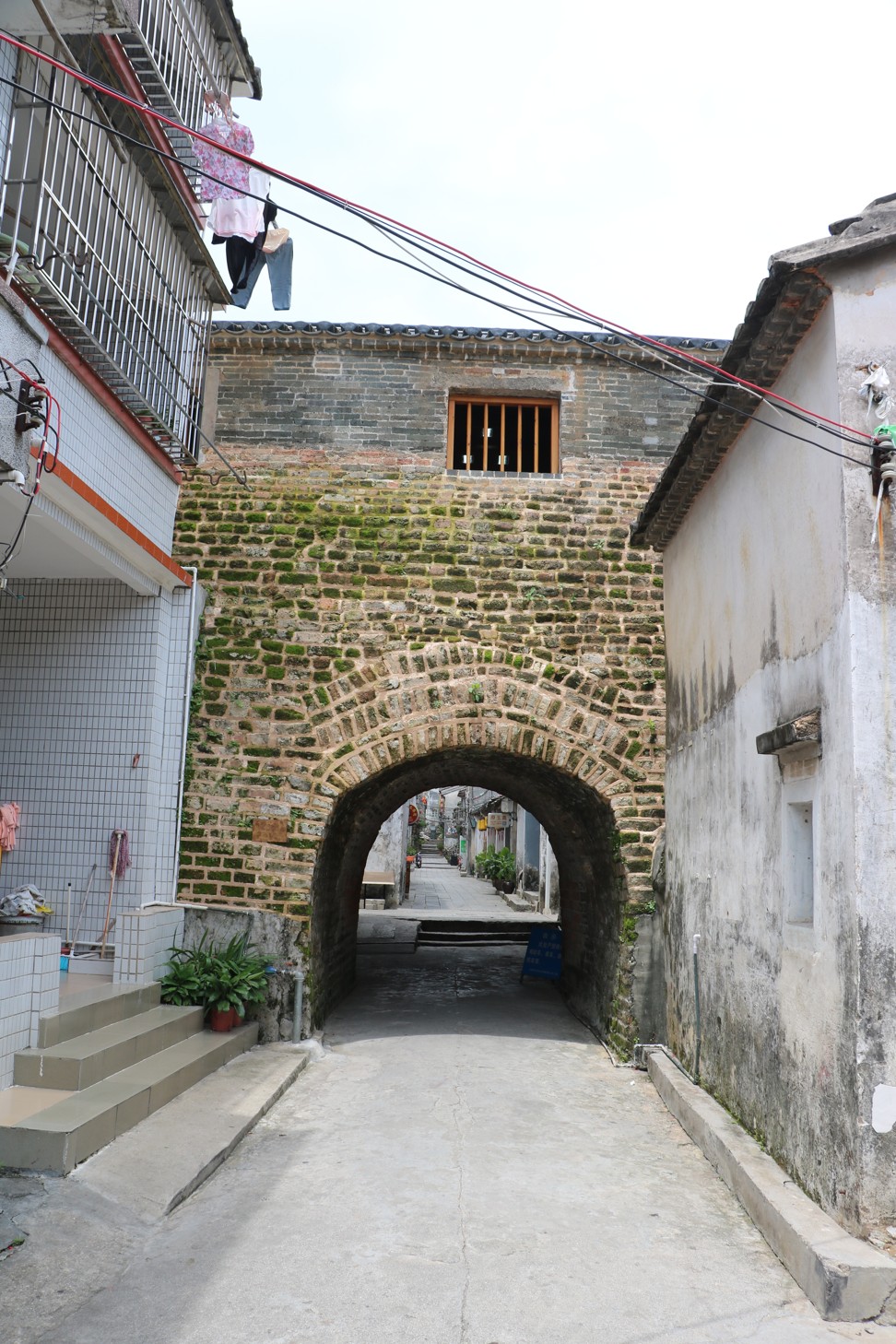
The 40 or so residential buildings of Qing-dynasty (1644-1912) vintage that have survived include ancestral halls and family homes, a number of which are open to the public. These, however, are overwhelmed by 800-plus tenement buildings, imbuing Nantou Ancient City with a rough-and-ready immigrant vibe that does little to conjure up the China of old. Land reclamation and the construction of high-rise towers mean Nantou can no longer see the sea it was established to overlook and, other than the crumbling remnants of city ramparts, there’s little to suggest this was ever anywhere of consequence.
Nantou’s military purpose shifted as commercial industries such as pearl collecting, oyster cultivation and, significantly, salt production developed in the area. The Longqi Salt Fields, near Dapeng Bay, were considered some of the most productive and profitable in the south and were worked as recently as 1998 (a legacy recalled in the district of Yantian, which literally means “salt fields”).
One of the finest relics in the Shenzhen Museum is a beautifully preserved ornamental column engraved with an image of Buddha. It was commissioned by a well-to-do director of the salt guild, named Zhou Mu, during the Song dynasty (960-1279). It’s clear from this – as well as other artefacts, including a Tang dynasty (618-907) floral eave tile found in Nantou, copper coins from the Five Dynasties and Ten Kingdoms period (907-960) and Song-dynasty burial objects that were unearthed on the Dapeng Peninsula in 1985 – that Bao’an County enjoyed a prolonged period of prosperity.
But the good times wouldn’t last forever and when catastrophe struck the Southern Song court in Hangzhou in the middle of the 13th century, Shenzhen would bear witness to the end of a golden age. It’s an event remembered on a remote outcrop in Chiwan, at Nanshan’s southwest tip, on the Shekou Peninsula.
The peninsula is where Shenzhen’s first factories set up shop in 1979. Walking around what has since become an international business hub, one gets little sense of imperial China. Palm tree-lined boulevards lead past faux-European architecture to a landlocked ship that is the centrepiece of a zesty, if vaguely seedy, neighbourhood of bars and restaurants chiefly catering to a mercantile class of boozy foreigner. Few venture up the steep mountainside that creates a lush backdrop to the fast-food joints, shopping malls and hotels, but it is here, among leafy vegetation, that one finds a sombre cenotaph commemorating dynastic demise.
Incense smoke hangs heavy in the air as I enter the Tomb of Song Shaodi, also known as Emperor Zhao Bing. A statue of the last Southern Song prime minister, Lu Xiufu, carrying the child emperor on his back stands near the entrance of the burial site. Surrounded by colourful banner flags, a man pays his respects to his Song forebears, kneeling to pray, red incense sticks held aloft.
The “tomb” honours the Battle of Yamen, which took place near Jiangmen (across the Pearl River and beyond Macau) in 1279 and saw heavily outnumbered Mongol forces finish off the last of the Song navy. When defeat became inevitable, Lu committed suicide by leaping from a cliff, holding the eight-year-old emperor in his arms.
According to the official History of Song, written during the Mongol Yuan dynasty (1279-1368), the emperor’s body, along with hundreds of corpses, washed up along the Shekou coast. Whether this is local legend or historical fact is debatable but the tomb in Chiwan does express how interconnected the Pearl River Delta region had become by that period, and indeed, how wedded the south’s culture was to China as a whole.
A thousand years after the Han conquest of this “barbarian” region began, assimilation was near complete.
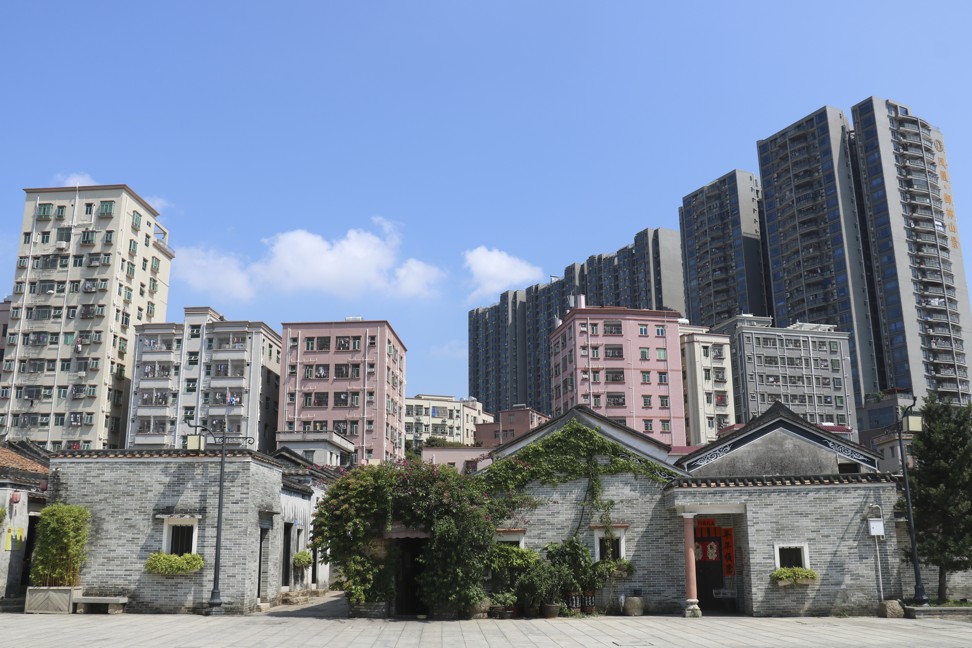
To the northwest of Nanshan lies the sprawling Bao’an manufacturing hub. Once distinct entities separated by barbed-wire fences, guannei (the Special Economic Zone) and guanwai (the area beyond the now unmanned checkpoints) are today connected by efficient public transport. But there remains a discernible difference between the two halves of the city, the glossy downtown area giving way northwards to a sobering industrial landscape. From the bus window, I see cracked pavements, litter floating in oily puddles and architecture that is uniformly grim. People here are discernibly poorer, the men sporting polyester T-shirts with misspelt Western brand names, the women carrying pleather handbags and tripping over in poorly fitting high-heeled shoes.
To borrow from writer Murong Xuecun, who once lived in Shenzhen, “in China there are many Chinas”. This is a world of parallel worlds, centuries apart, often existing cheek-by-jowl. Just as I’m beginning to worry that I am destined to arrive at a crude industrial estate built over some marvel of antiquity, a classical pagoda appears, an image so curiously at odds with its surroundings that I wonder for a moment if it is a mirage.
Fenghuang, or Phoenix Village, is an enclave that has survived centuries of destruction and reconstruction, perhaps because it owes its genesis to a patriotic hero. A Song-dynasty official from Jiangxi, Wen Tianxiang was captured by the invading Yuan armies in 1278. He was offered a post in the new Yuan government and ordered to convince the remaining Song forces to surrender. He refused and was imprisoned, before being executed in 1283. The family name sullied, his sons dispersed across the country. One of their ancestors made his way here and founded Fenghuang Village, and the Wen Pagoda bares the clan name.
Narrow paths snake between Fenghuang’s Ming- and Qing-era bungalows. Laundry hangs near a papaya tree while street-facing whitewashed walls and Chinese- and English-language signs suggest the village has been given the tourist treatment. Fenghuang’s main buildings include the Huaiting Ancestral Hall, which is marked a “Bao’an District protected cultural relic”, but the village centrepiece is the pristine Wen Family Clan Hall, its door flanked by golden lion heads, its rooftop adorned with meticulously carved green porcelain fish and orange dragons.
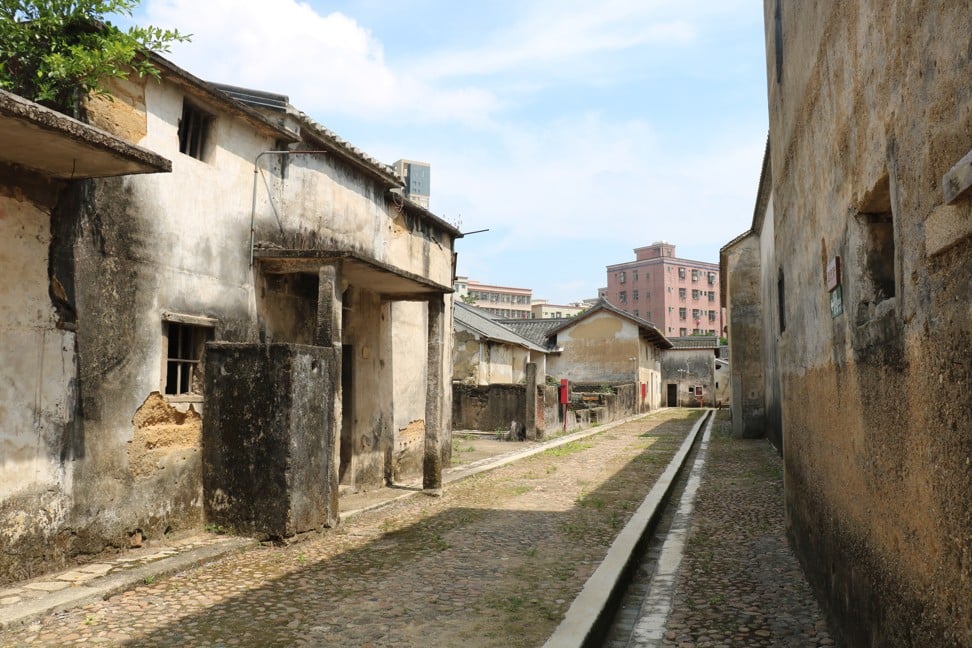
The owner of a store selling tourist maps, sun hats and cold drinks tells me, “My family name is Wen, everyone from here is surnamed Wen.”
“Everyone?” I ask. “Where are they?” The village is eerily empty.
“The government moved them out to the surrounding apartment blocks. Few people stayed.”
“But why?”
“To develop tourism.”
“But there are no tourists.”
“You know, China is just that way …” Wen says, with the sort of open-ended sentence often used when a mainlander has a complaint with officialdom.
Around the corner is a branch of Modern 1906, an ice-cream parlour chain that originated in distant Harbin, in Heilongjiang province. I buy a taro-flavoured lollipop and sit on the doorstep. A tour group sporting identical caps arrives, alighting a bus and following a megaphone-brandishing guide on a swift loop of Fenghuang. Before long, they leave, returning the village to near silence.
As Stephen Platt writes in Imperial Twilight: The Opium War and the End of China’s Last Golden Age (2018), “in the 1660s, the young Qing dynasty was just twenty years past its conquest of Beijing and still only partially in control of the empire. It faced a pirate navy of more than a thousand ships and 150,000 sailors that had declared open rebellion against the Manchus and called for the restoration of the Ming dynasty. Kangxi had just come to the throne, a mere boy at the time, and he and his advisers recognised that the dynasty’s forces, which were mounted on horseback, could not possibly hope to master such a large force of pirates on the water. So rather than fighting them head-on, Kangxi instead ordered the evacuation of China’s entire southeastern coast.”
In the Great Clearance of 1661, the Kangxi Emperor ordered the depopulation of what was then called Xing’an County – an area comprising much of modern-day Hong Kong and Shenzhen. Sixteen-thousand people were forced inland by 5km, according to Platt, and much further the following year. Villages were razed and farmland dug up, to dissuade returnees, as people were herded away from their homes at spear point. Only a few thousand are said to have returned to their ancestral homes once the evacuation was rescinded, in 1669.
But the dislocation offered an opportunity for the Hakka – a Han subgroup that had been steadily migrating south from the northern plains for centuries. Faded photographs in a Shenzhen Museum exhibition titled “Ancient Migration” show walled compounds, essentially enclosed clan villages, belonging to Hakka who had “settled after abolition of the Coastal Evacuation of the Qing”, as a plaque next to a migration chart reads.

“You can still find [Hakka enclaves],” says Tsai, writing down names on a piece of paper. “Basically you can use the Kowloon-Guangzhou railway that runs through the city as a dividing line. To the west you’ll find mostly Cantonese-speaking villages, to the east there are more Hakka villages, as they came here from the mountains of Huizhou, Heyuan and Meizhou.”
Tsai’s list contains some of the better-preserved enclaves and they can all be reached by taking the metro line northeastwards into Longgang district. Once again, the cosmopolitan cool of Luohu gives way to a realm of migrant workers and factories. But what I discover scattered among the industrial sprawl is unexpected: three incredibly well-preserved fortified villages, all fronted by jade-coloured, half-moon lakes.
New Crane Lake Residence, dating back to 1817, is the most tailored to tourism of the trio, with English-language signs and a Hakka folk exhibition displaying old farm tools, traditional dress and dragon boats, as well as portraits of notable Hakka individuals, including many who made successful lives overseas.
About 13km away, near Henggang station, is the Maosheng Residence. It is located off a disorderly backstreet and has little in the way of tourist infrastructure. It’s still inhabited, as I discover, by chance, when passing the open door of the remaining resident, who is eating lunch with his grandchild, daughter-in-law and maid.

“My name’s Mr He, we’re all Hes around here,” he says, between mouthfuls of rice and spinach.
“Did you grow up here?” I ask.
“Yes, and my parents, and my grandparents,” he says, gesturing to black-and-white portraits hanging on the walls. “Now I’m the caretaker.”
“Where’s the rest of your clan?”
“Outside,” he says, gesturing beyond Maosheng’s high stone walls with his chopsticks. It’s not clear whether he means Shenzhen or the wider world.
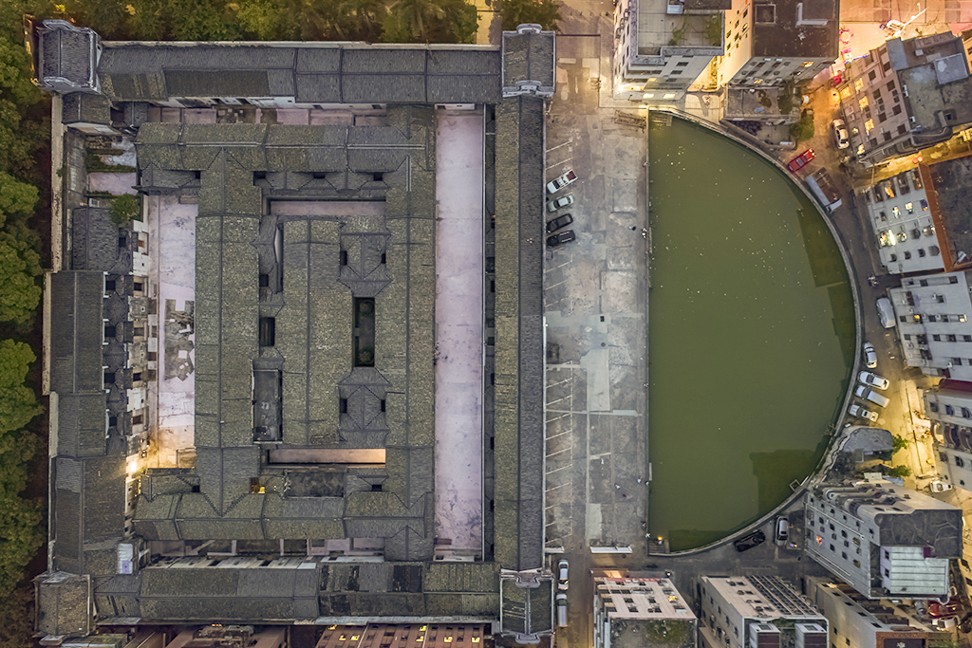
Perhaps the finest Hakka homestead, due to its scale and age, is the Dawan Residence, in the remote Pingshan district. The Zeng clan built it in 1791, and, at 22,690 square metres, it dwarfs Maosheng (6,205 square metres). When viewed from the lake at its gate, the exterior walls offer an imposing example of how threatened the Hakka, or “guest people”, felt as they intruded on the traditional domain of the Cantonese.
Inside, a paltry effort has been made at curating another folk exhibition but, by and large, Dawan’s water-stained ramparts and rows of empty, crumbling homes attest to the same ghostly historical amnesia that permeates many of Shenzhen’s old quarters. Faded Cultural Revolution slogans written in big red characters still mark the walls, further evidence of just how long these fine buildings have been ignored as the region has rushed unsentimentally towards modernity.
The Ming and the Qing dynasties followed a similar arc, beginning with a few powerful rulers before entering a long period of slow decline. The early Ming was very much an age of revived prestige, exemplified by the great naval voyages of Admiral Zheng He. According to local lore, in the early 15th century, He got into trouble off the coast of Shenzhen and came ashore to pray at the Tianhou Temple, which is on the hill in Chiwan, a stone’s throw from Emperor Zhao Bing’s tomb.
But if there’s anywhere of serious historical value on the Shenzhen map, it is the Dapeng Fortress, which stands to the east of Hong Kong, across Mirs Bay. First constructed in 1394, during the reign of the Hongwu Emperor, to defend the coast against pirate attacks, principally from Japan, what occupies the site today is a seaside castle. The tourist bureau has had the fortress decked out with mock imperial banners and red lanterns, which add to the frontier aura of the place, here at the edge of heaven’s domain.

When I first visited the fortress, in 2009, it was a challenge to get to, requiring several buses and the assistance of the now extinct motorcycle taxi. The fortress was still very much the realm of the Pengcheng people, fisherfolk who had married troops sent from the hinterland, creating a unique coastal culture and speaking a language that fused aspects of Cantonese, Hakka and northern dialects. The wrinkled women wore large bamboo hats and blue blouses, and while the sun-bronzed men had adopted a more Western style of dress, both sexes looked at me as if I were some kind of intruder from Mars as they fixed their nets, dried seafood and salted fish on the street, and shooed away stray dogs.
Tourism has now taken hold, both within the fortress walls and in the guest houses and restaurants that have been built all the way out to Jinshuiwan, a picturesque cove popular with the windsurfing set. Nevertheless, Dapeng remains, as Tsai points out, “the best example of ancient architecture anywhere in Shenzhen”.
The walls are six metres high, extend for 1,200 metres and encompass about 100 homes within 110,000 square metres. Despite overt commercialisation, if you get off the main drag, where shops sell tofu delicacies, barbecued corn and tourist tat, mossy granite backstreets lined with lived-in village homes and temples offer up at least a hint of Ming China.
A few years ago, Jinshuiwan was a messy Hakka fishing village plagued by feral dogs and feral children. It is now, like the fortress, a busy tourist attraction, jet skis and pedal boats crowding the water.
The past doesn’t quite fit with Shenzhen’s prevailing narrative, as the city’s “40th birthday” celebrations, so named despite centuries of history, show.
“The point is that Shenzhen only became a city in 1979,” says Tsai, sticking to the party line. “You have to understand that what was here was not Shenzhen per se, but a place that was part of a wider story, a regional one of the Nanling people [those who come from south of the Nanling Mountains, chief among them the Cantonese] and Greater Bay Area,” he says, slipping the Pearl River Delta’s new epithet into the conversation.
I think of the Zhuangzi’s rok once more.
“His wings are like clouds all over the sky. When the sea begins to move, this bird sets off for the southern darkness, which is the Lake of Heaven …”